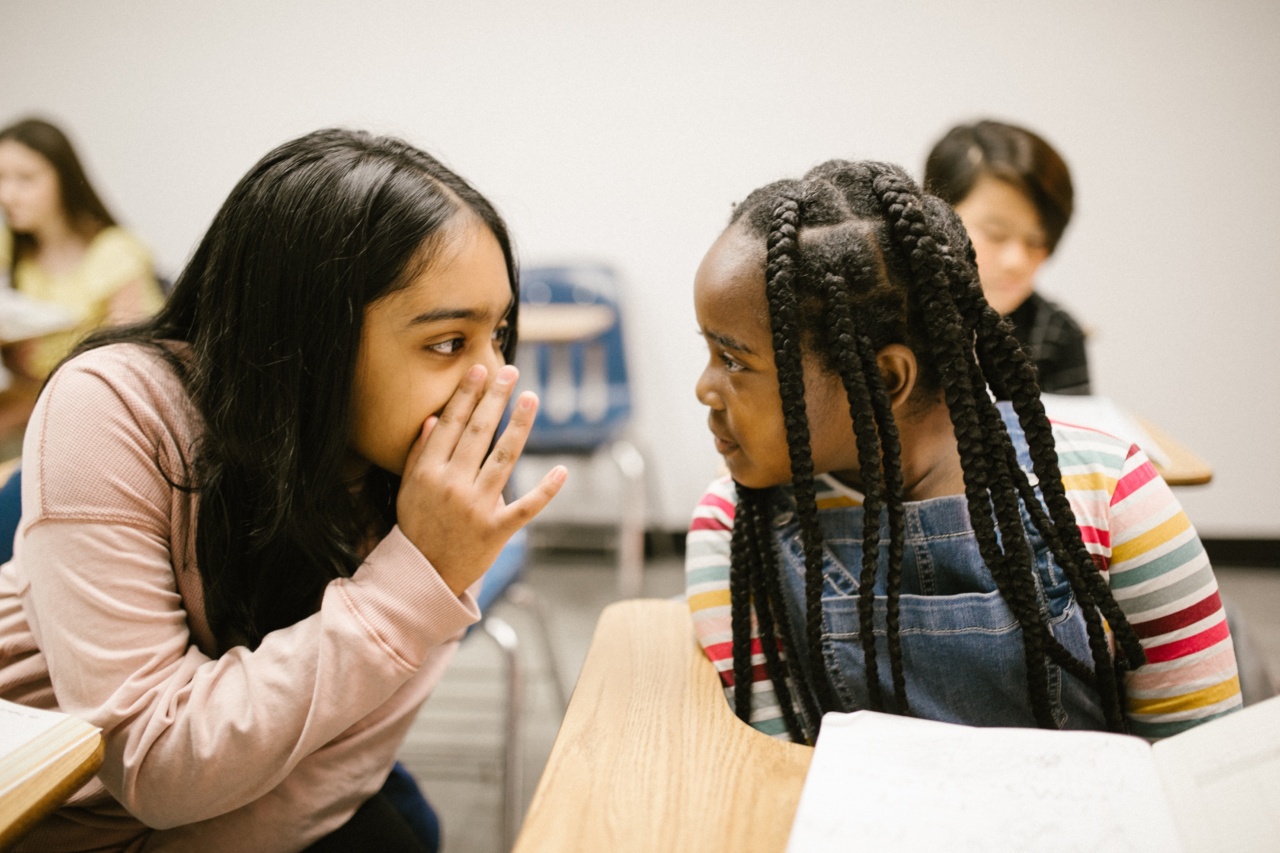Bullying is a prevalent issue in schools that can have significant negative impacts on a child’s well-being and academic performance.
As a parent or guardian, it is crucial to be aware of the signs of bullying in your child, as they may not always openly communicate their experiences. By familiarizing yourself with these signs, you can take appropriate actions to address the issue and provide necessary support to your child.
1. Unexplained Physical Injuries
One of the most apparent signs of bullying is unexplained physical injuries. Your child may come home with bruises, cuts, or scratches without any logical explanation.
These injuries may be a result of physical aggression from a bully, who may target your child intentionally or in the form of pranks.
2. Frequent Illnesses or Fake Claims
If your child frequently complains of headaches, stomachaches, or other ailments, it could be an indicator of bullying. Bullied children may feign illness to avoid going to school and facing their tormentors.
Persistent complaints of illness that coincide with school days should not be ignored.
3. Unwillingness to Attend School
A sudden, consistent unwillingness to go to school can be a sign of bullying. Your child may resist attending school, come up with excuses, or display fear and anxiety when it’s time to go.
This behavior can be a direct response to bullying and the fear of encountering the bully.
4. Emotional and Behavioral Changes
Experiencing bullying can cause significant emotional and behavioral changes in a child.
Look out for signs such as sudden mood swings, increased irritability or anger, decreased self-esteem, withdrawal from social activities, loss of interest in hobbies, increased aggression, or changes in eating or sleeping patterns. These changes can indicate that your child is dealing with bullying and feeling overwhelmed by their experiences.
5. Decreased Academic Performance
Bullying can affect a child’s ability to focus and perform well academically. If your child’s grades begin to decline, they may be experiencing bullying.
Constant fear and preoccupation with the bullying situation can make it challenging for them to concentrate on their studies, leading to a drop in their academic performance.
6. Loss of Personal Belongings
If your child frequently loses or comes home without their belongings, it could be a result of bullying. Bullies may target your child’s possessions, causing intentional damage or theft.
Pay attention to your child’s missing items and their explanation for their disappearance.
7. Social Isolation
Bullied children often experience social isolation as they may feel ashamed, embarrassed, or fearful of their peers.
If your child has limited or no social interactions with their classmates, regularly eats alone, or avoids group activities, it could be a sign that they are being bullied.
8. Changes in Online Behavior
In today’s digital era, bullying has extended to online platforms as well. Watch out for changes in your child’s online behavior.
They may suddenly stop using their devices, become secretive about their online activities, or display signs of distress after using social media or other online platforms. Cyberbullying can have severe implications on a child’s mental well-being.
9. Reluctance to Discuss School Experiences
If your child avoids talking about their school experiences or becomes hesitant to share details about their day, it may be a sign of bullying. Children who are being bullied often fear judgment, retaliation, or not being taken seriously.
Create a safe and non-judgmental space for your child to express their feelings and experiences freely.
10. Noticeable Changes in Friendship Patterns
Pay attention to your child’s friendship patterns. A sudden loss of close friends or a change in their social circle can indicate bullying. Bullies often manipulate social relationships and isolate their targets from supportive individuals.
Engage in open conversations with your child about their friendships, ensuring they feel comfortable sharing any concerns.
Being aware of the signs of bullying enables you to intervene and support your child effectively. If you suspect that your child is experiencing bullying, take the following steps:.
How to Address School Bullying
1. Open Communication: Initiate open and honest conversations with your child about their experiences at school. Encourage them to confide in you and share any concerns they may have.
2. Validate Their Feelings: Let your child know that their feelings are valid and that you believe them. Assure them that they are not alone and that you are there to support them throughout the process.
3. Contact the School: Reach out to your child’s school and communicate the concerns you have regarding the bullying.
Provide specific details about the incidents and request a meeting with the appropriate individuals, such as teachers, counselors, or principals.
4. Advocate for Your Child: Be an advocate for your child by actively participating in meetings with school staff. Collaborate with them to develop an action plan to ensure your child’s safety and well-being.
5. Teach and Empower Your Child: Help your child develop strategies to cope with bullying situations. Educate them about assertiveness, self-confidence, and the importance of seeking help from trusted adults.
6. Encourage Reporting: Reinforce the importance of reporting incidents of bullying to both you and school authorities. Emphasize that by speaking up, they are not only helping themselves but also preventing others from being victimized.
7. Create a Supportive Environment: Foster a supportive environment at home where your child feels safe discussing their concerns.
Encourage positive social interactions, build their self-esteem, and engage in activities that help them develop resilience.
Remember, addressing school bullying requires a collective effort from parents, schools, and the community.
By recognizing the signs of bullying and taking appropriate actions, we can create safer and more nurturing environments for our children to thrive.




















